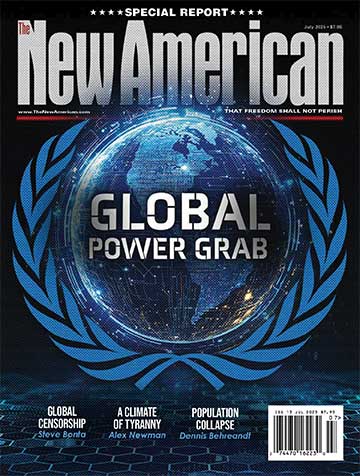
Have you ever thought the temperature readings you hear in the media sound suspiciously high? On Wednesday, the Heartland Institute gave evidence for such suspicions, when it released a new study entitled “Corrupted Climate Stations: The Official U.S. Surface Temperature Record Remains Fatally Flawed.”
The study was authored by Anthony Watts, a senior fellow for environment and climate at The Heartland Institute and the creator of the climate-realism website Watts Up With That; and Dr. H. Sterling Burnett, director of the Arthur B. Robinson Center on Climate and Environmental Policy.
The study found that “approximately 96 percent of U.S. temperature stations used to measure climate change fail to meet what the National Oceanic and Atmospheric Administration (NOAA) considers to be ‘acceptable’ and uncorrupted placement by its own published standards.”
NOAA’s own standards call for temperature measuring to be done “Over level terrain (earth or sod) typical of the area around the station, and, at least 100 feet from any extensive concrete or paved surface.”
NOAA claimed that it had cleaned up its United States Climate Reference Network (USCRN) data-collecting sites but in 2014 switched to another data set called “nClimDiv.” The “nClimDiv” data included all of the USCRN data, along with thousands of other data-collection locations, many of which were beset with the same heat-adding biases.
To document their findings, the authors of the new report used “photographic documentation combined with GPS and Google Earth Pro location assistance,” just as the 2009 Surface Stations Report used to document temperature recording placement.
The 2009 report cited similar findings, but the government’s written report dismissed those findings, claiming that, according to Watts and Burnett’s report, “statistical manipulation could account for and correct the siting problems observed at each station.”
The study’s authors called claims that those siting issues could be corrected and accounted for in the data “disingenuous.”
Watts and a team of volunteers also conducted in-person site visits to determine exactly where temperature-measurement devices were located.
Watts and his team concluded that after a “comprehensive and representative sample of stations, 96 percent were found to be biased in some way by the heat sink effect, or other heat sources.”
“With a 96 percent warm-bias in U.S. temperature measurements, it is impossible to use any statistical methods to derive an accurate climate trend for the U.S.” Watts said. “Data from the stations that have not been corrupted by faulty placement show a rate of warming in the United States reduced by almost half compared to all stations.”
Those findings show that the siting situation when it comes to recording temperature in the United States has gotten significantly worse than the 2009 report, in which only 89 percent of temperature recording sites had a heat-bias issue.
“The original 2009 surface stations project demonstrated conclusively that the federal government’s surface temperature monitoring system was broken, with the vast majority of stations not meeting NOAA’s own standards for trustworthiness and quality. Investigations by government watchdogs OIG and GAO confirmed the 2009 report findings,” said Burnett.
“This new study is evidence of two things. First, the government is either inept or stubbornly refuses to learn from its mistakes for political reasons. Second, the government’s official temperature record can’t be trusted. It reflects a clear urban heat bias effect, not national temperature trends,” Burnett concluded.
The new report shows photos of dozens of temperature-measuring devices located next to heat-capturing surfaces including metal buildings, heat sources, on sidewalks, and even next to air-conditioning units, which produce heat.
The report also included data from the very few properly sited temperature-measurement stations, which showed some mild warming.
“If you look at the unperturbed stations that adhere to NOAA’s published standard — ones that are correctly located and free of localized urban heat biases — they display about half the rate of warming compared to perturbed stations that have such biases,” Watts said. “Yet, NOAA continues to use the data from their warm-biased century-old surface temperature networks to produce monthly and yearly reports to the U.S. public on the state of the climate.”
It’s a report that won’t receive much, if any, play in the mainstream media, which cares far more for the climate-emergency narrative than it does the truth. But it’s just more evidence to show that whenever you hear that the current year or month is the “hottest on record,” you should take such claims with a grain of salt.





